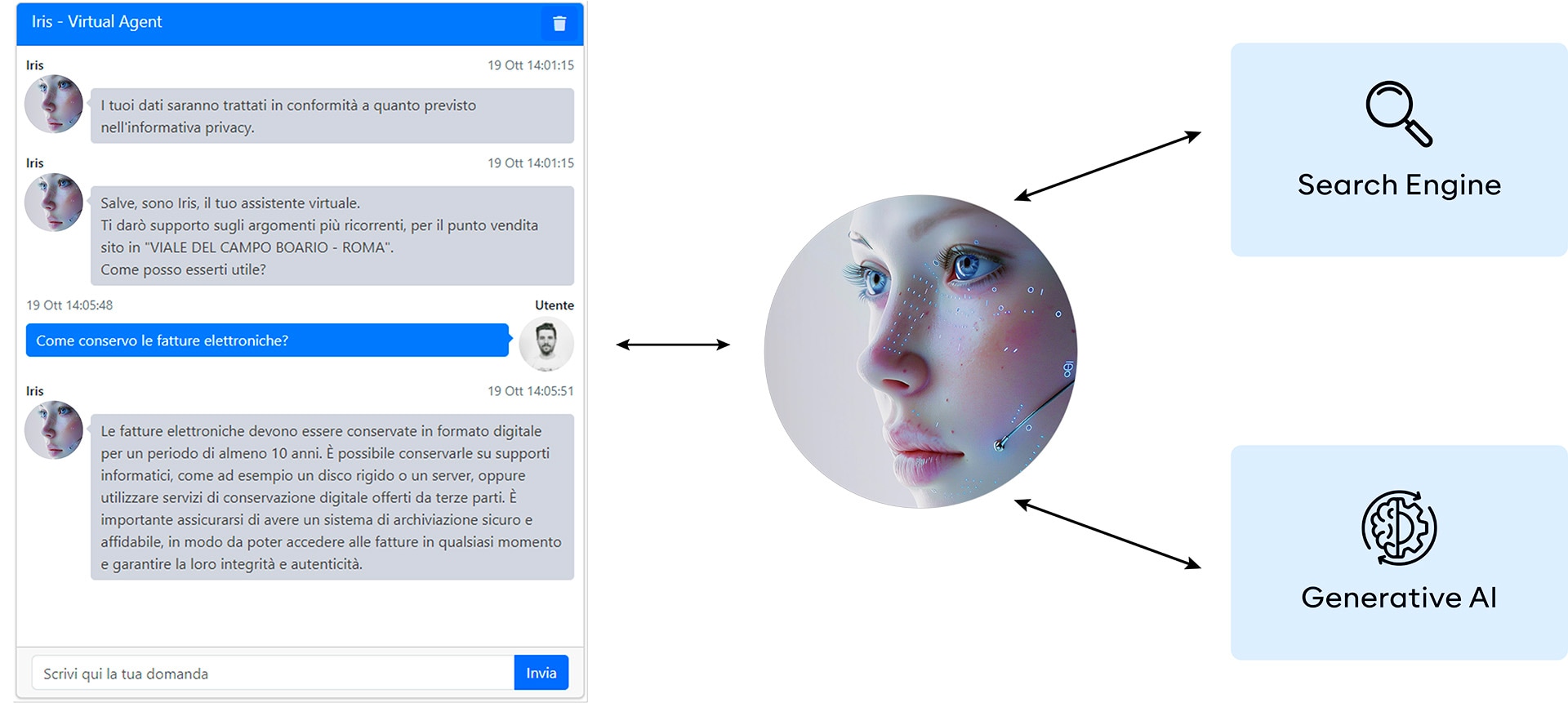,allowExpansion)
AiRing: the new GenAI Chatbot
Born for dialogue
AiRing is designed to handle and respond to support requests submitted by users. It is able to address a wide range of queries related to the specific context in which it is employed, leveraging a broad base of documents indexed through the Solr search engine. This system requires no specific training: it directly uses existing documents to create an appropriate information context.
Interaction with users is facilitated by a web chat, developed using the React library, which provides a smooth and intuitive experience. This tool makes it possible to provide quick and accurate responses, significantly improving the efficiency of the support service.
Open to specialization
AiRing is developed to automate prompt engineering with the help of documents provided for context.
The structured and unstructured data held by AiRing become knowledge that it draws on to produce a prompt. This prompt is then provided as input to a GenAI model to produce a human-like response.
The core of this chatbot uses the Spring Boot framework that provides a dockerisable, cloud-ready application.
AiRing
AiRing has a graphical interface through which user questions can be collected and the correct answers displayed. The entire application is cloud-ready, scalable, and capable of supporting a high load of questions. It can communicate with different types of GenerativeAI, including Gemini and ChatGPT. The product is fully customisable through appropriate plugins: new GenerativeAI templates can be easily integrated or alternative search engines to Solr can be used.

Coming soon: vocal interaction
Thanks to a new feature, you can now start a conversation with your chatbot.
This will make your experience more fluid and engaging.
The advantages
Thanks to our advanced technology, the interaction with the chatbot becomes faster and more efficient. With the speech-to-text functionality, users can communicate faster, without the need to type, saving time and simplifying the overall experience.
In addition, for those who have difficulty typing or using touch devices, this functionality represents an important accessibility opportunity, making interaction with the chatbot easier and more accessible to everyone.
Finally, with our text to speech system, the chatbot no longer responds only with text, but uses a personalized voice, adding a touch of humanity to the conversation and improving the personalization of the user experience.